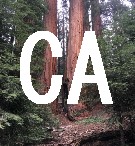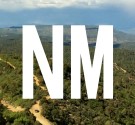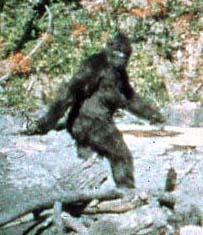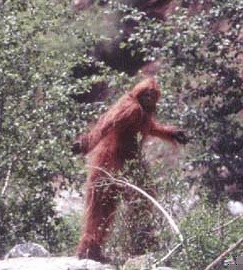|
Q: Why can't it be done? Why
can't anyone accurately recreate the "costume" used
in the Patterson footage?
A: It's not a man in a costume ...
The image on the right is from a scene in an episode of X-Creatures.
X-Creatures was a wildlife documentary series made
by the BBC's (British Broadcasting Corporation) Natural History
Unit. The episode was filmed around 1995 or later.
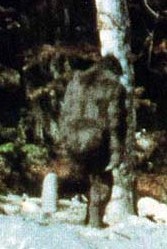 |
Frame 72.
The moving footage reveals the movement of massive muscles
in the back, and the shoulders and the limbs. These proportions
and dynamics, among other things, cannot be simulated
by a man in simple padded costume. |
In this program the BBC sought to debunk the Patterson footage
by recreating the "hoax."
In order to have the most exacting re-enactment possible,
the BBC hired the best monster costume designer in Hollywood
and even took the costume to the same location where the Patterson
incident occurred in Northern California.
How could the BBC have missed the mark so badly with their
replica of the Patterson "costume"?
In the Patterson footage, the figure's muscles are flexing
noticeably as the figure walks away. To simulate that, the
BBC's costume designers in Hollywood had to create a costume
that would show the same effect of flexing muscles.
Remote controlled soft-tissue prosthetics were not invented
until well after 1967, so they could not be used in an honest
replica of a 1967 costume. The costume had to allow the actor's
own muscles to flex the outermost surface of the costume.
It was assumed the muscle bulk of the costume could be amplified
to match the Patterson creature's muscle bulk, just by fluffing
up the fur. There was actually no other choice. There could
be no significant padding between the actor's muscles and
the fabric to which the fur was attached, without interfering
with visibility of the muscles flexing.
The difference of the fur color may not have been so apparent
to the designers until they took their costume on location
and out into the bright mountain sunlight.
The Patterson figure has a mix of shiny dark fur with reddish
auburn undertones. The fur colors and reflectivity change
slightly as the fur moves in bright sunlight. The reddish
undertones are not very pronounced in the frame 352 image
above.
The BBC's costume designers in Hollywood used artificial fur
with a reddish tint to simulate the reddish tones seen in
the footage. While developing the costume, the chief designer
said the Patterson creature's fur looks like "the typical
cheap fake fur they used in the '60's." So that's what
he used.
The images above show how that "typical fake fur from
the 60's" doesn't create the same kind of reflective
sheen, or change color much as the fur moves in the sunlight.
The side by side images above reveal striking difference in
the muscle proportions of the two figures. The muscles on
the Patterson figure are more than twice the size of the human's
muscles in many places. These muscles flex as the figure walks,
so they are not made of padding.
The Patterson figure's skeletal proportions can now be measured
by computer. Positions of the joints can be determined from
the rotation of the joints, and then modeled into a moving
3D skeletal frame. Although on the surface the Patterson figure
looks more or less human in terms of the skeletal proportions,
computer modeling demonstrates that the figure has a non-human
frame.
|












